By Dan Weisz
During spring and breeding season, it is a bit easier to find Great Horned Owls as they are “sitting” for weeks and months in one spot as they raise their young. In the past two weeks I’ve been able to visit three different locations to see a bit of this part of Great Horned Owls’ lives in Pima County. We have many Great Horned Owls nesting in the Foothills. If you have some in your backyard and would like photos, let me know!!
One of the families I visited has had two of the three youngsters already fledge and leave the nest. I found two in this tree in a desert wash.
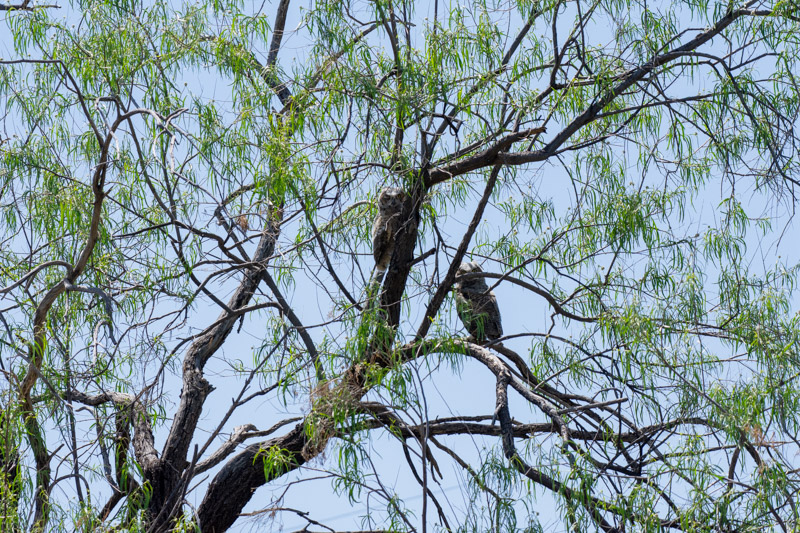
Here is a close-up of the same photo with the two birds in their juvenile plumage. The feathers on their heads are still short and downy looking with a hint of ear-tufts showing.
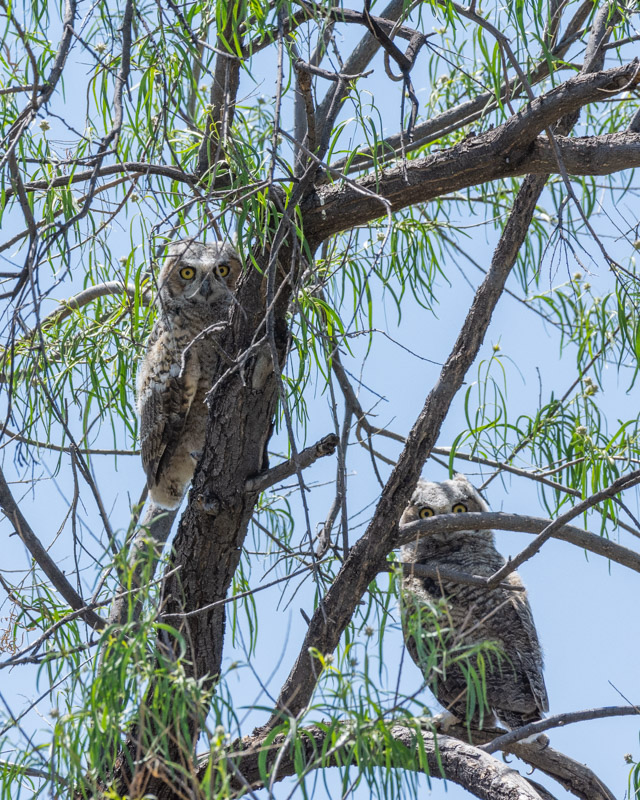
From the other side of the tree, in a photo shot earlier, you can see the mother sitting next to one of her kids. The mother owl is still showing her brood patch on her belly. That’s the line where where you can see the feathers separate indicating the owl has no belly feathers which enables direct contact with her skin on the eggs, and then chicks, on the nest. You can also see how feathered the legs and toes of the owls are.
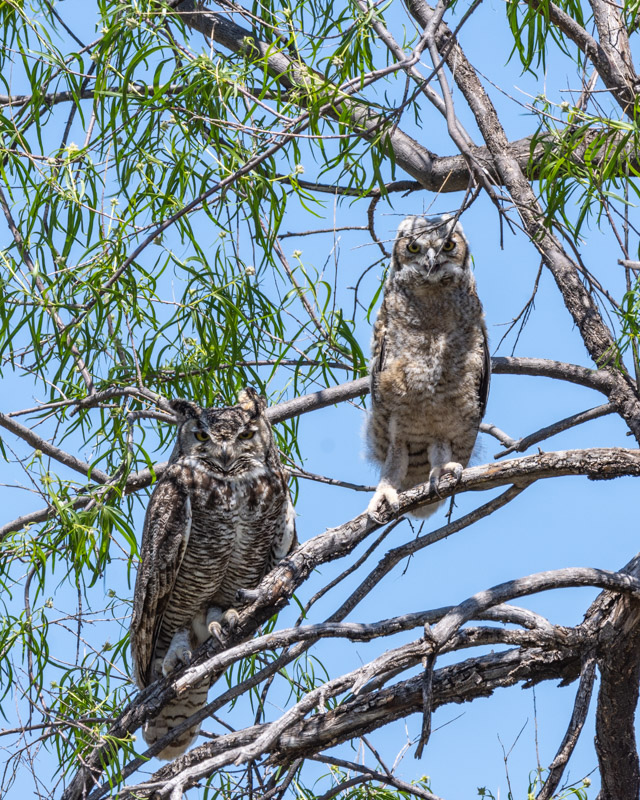
Those three owls were on a tree waiting until the third and final chick is able to leave the nest and fly. This doesn’t look like much of a nest below. Great Horned Owls do not build nests. They either borrow (or steal) other large birds’ stick nests that had been used in a prior year. Great Horned Owls will nest earlier than other large birds which enables them to do this. Great Horned Owls will also “nest” on other surfaces including various man-made platforms. The twigs on this nest were left by a raven or hawk some years ago.
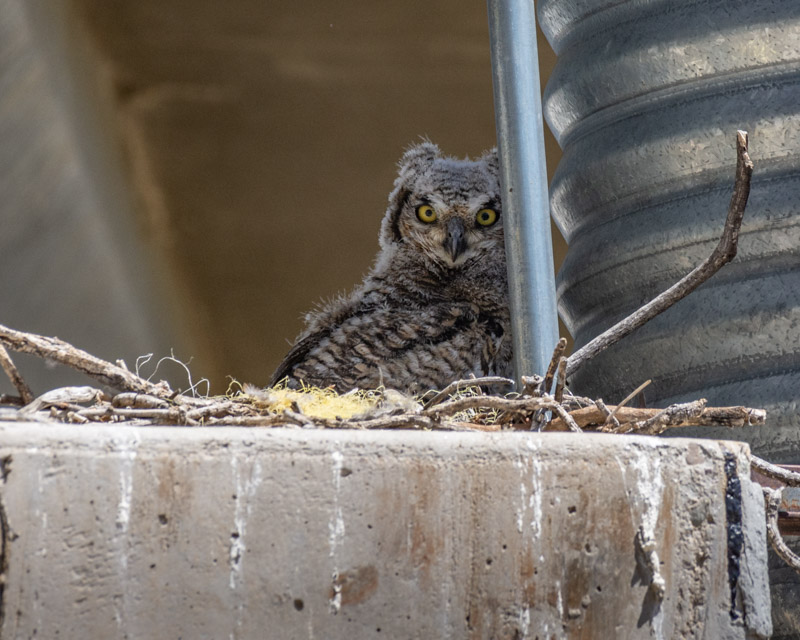
Here is another Great Horned Owl “nesting” on a man made surface, in this case at the entrance to a WalMart.
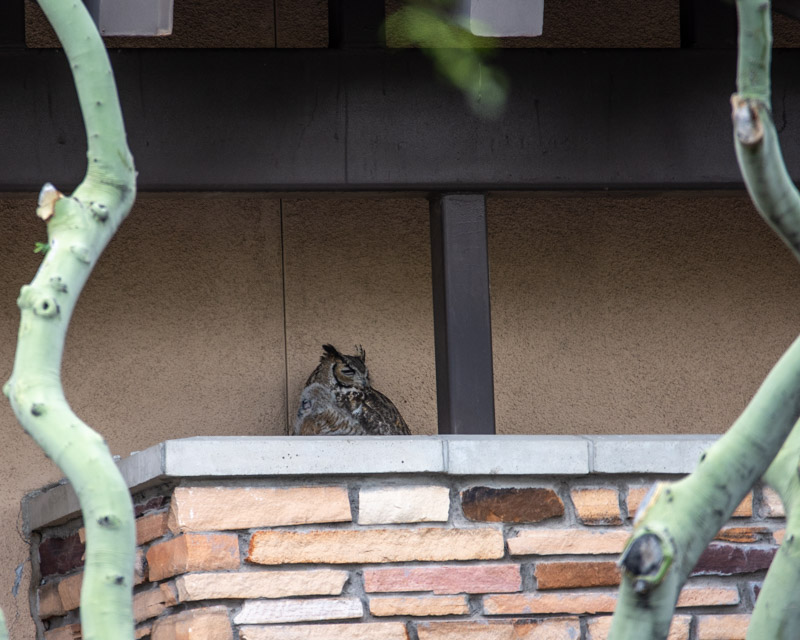
Mom is sitting with at least one chick. Look at the feathers on her head. In this photo, there was no wind, but look at the following photo.
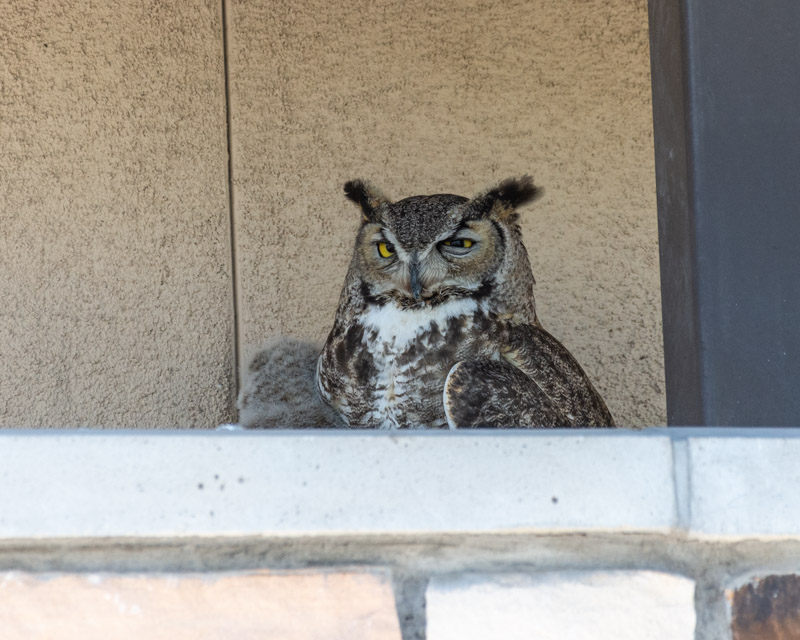
The wind picked up here and mom is squinting in the wind.
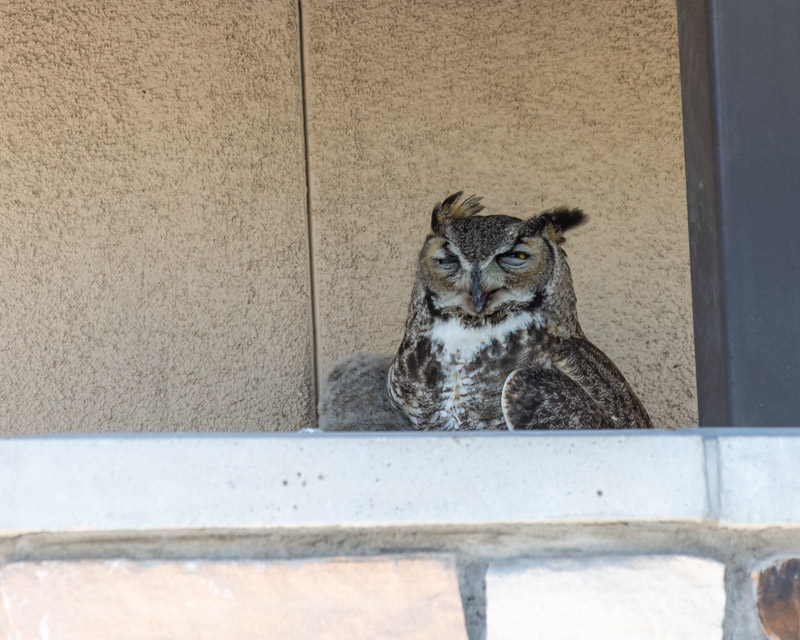
The third Great Horned Owl family was using an abandoned Cooper’s Hawk nest on a tall tree on the eastside of Tucson. This is one of the owlets who had been ‘branching’ for a while now. Many of its flight feathers have come in and its facial feathers are turning brown but it is still in its juvenile plumage.
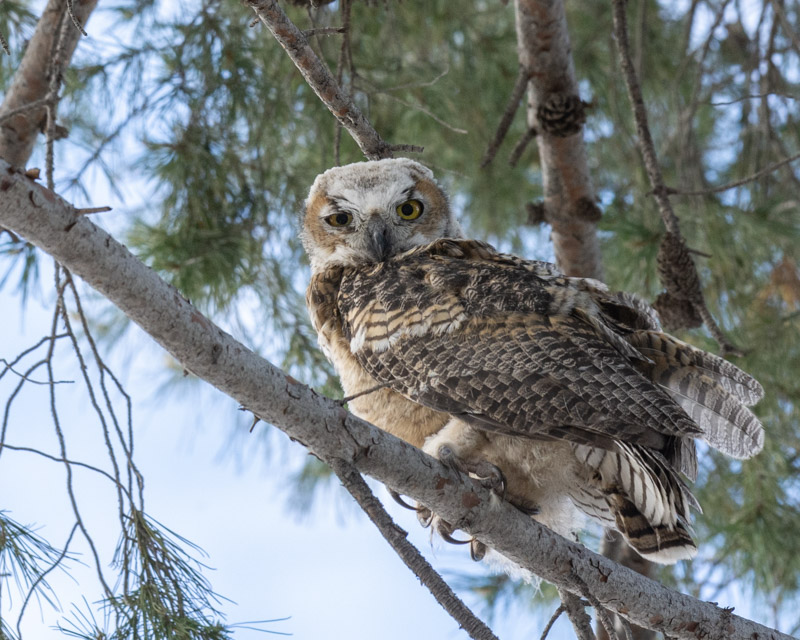
The mother Great Horned Owl perched nearby. The two photos below show how windy it was that afternoon. The owl was ‘locked’ onto her perch but the ear tufts sailed in the wind.
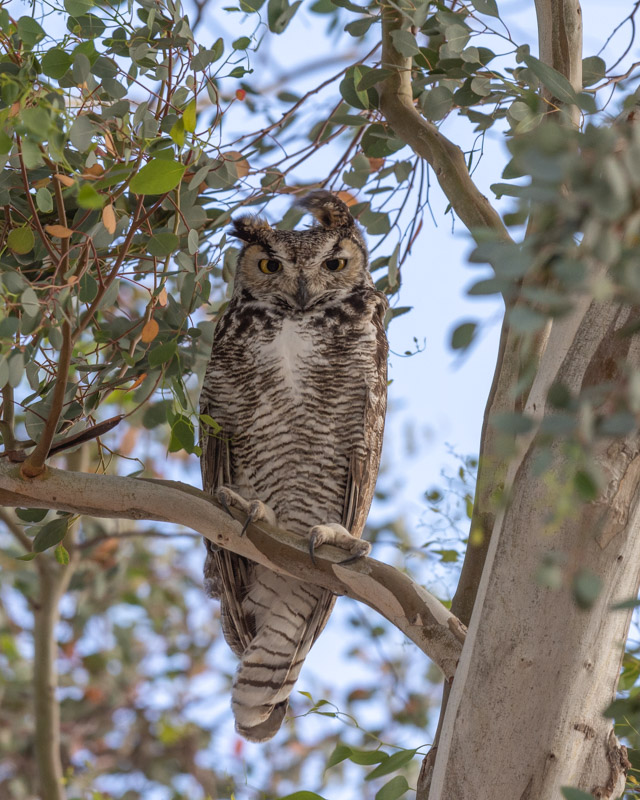
Even the feathers under her tail were blown in the wind.
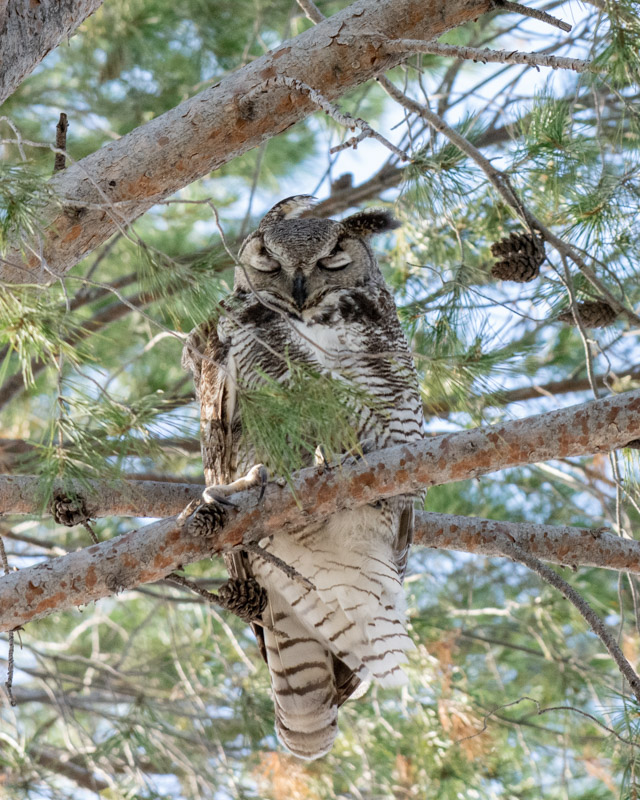
The talons of one of the owlets display the inherent power of the owl’s killing tools. The bumpy surface helps it grab onto prey and onto its perch. Note that there are two talons showing on each foot? Owls have four talons, three facing forward and one facing backwards. But owls can rotate the outer toe towards the back to form a very large claw to grab their prey with. In this pose, the owl has the outer toe on each foot turned to the back.
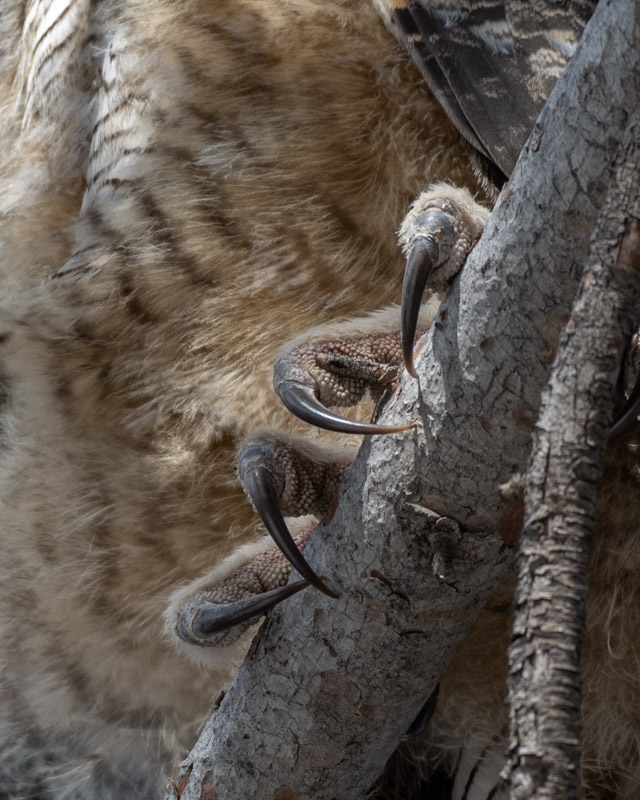
The father Great Horned Owl kept watch from a tree across the street. In this shot, he is looking straight down towards me.
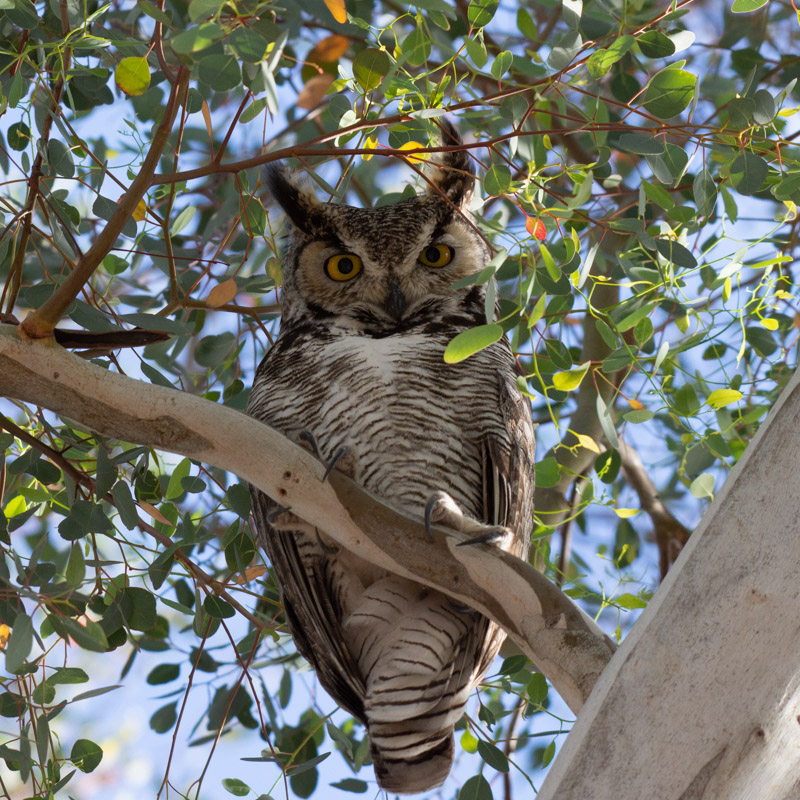
This owlet is doing a wing stretch to loosen up.

